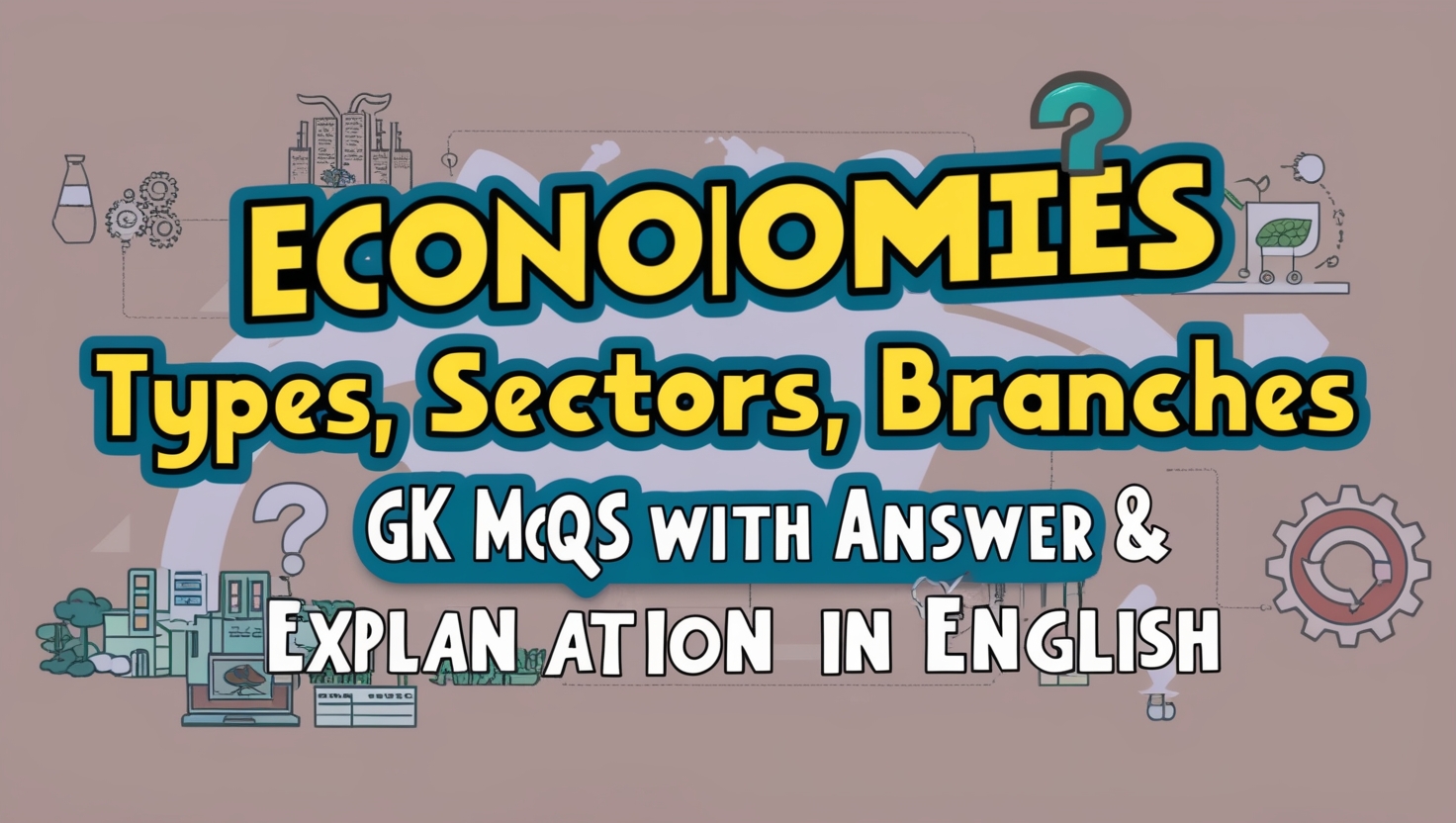
Understanding the different types of economies, their sectors, and branches is crucial for grasping how global and local economic systems function. This article, titled Economies Types, Sectors, Branches GK MCQs With Answer & Explanation in English, offers a collection of multiple-choice questions designed to test and expand your knowledge in this area.
Whether you’re a student, an economics enthusiast, or preparing for competitive exams, these MCQs, complete with detailed answers and explanations, will help you deepen your comprehension of economic structures and their various aspects. Dive in to challenge your understanding and enhance your learning!
1. Which type of economy has purely private ownership?
- Socialist economy
- Capitalist economy
- Mixed economy
- Traditional economy
Show Answer
Answer: Capitalist economy
In a capitalist economic system, the factors of production, including land, labor, and capital, are primarily owned and controlled by private individuals or companies. Private ownership is a fundamental characteristic of capitalism, and the motive for private actors is to maximize their profits.
2. Who determines prices in a capitalist economy?
- Government
- Big corporates
- Market forces
- None of the above
Show Answer
Answer: Market forces
Prices in a capitalist economy are determined by the interaction of demand and supply in free markets. This means that the prices of goods and services fluctuate based on consumer preferences and the availability of these products, with minimal government intervention.
3. Capitalist economic system is a feature of which of these countries?
- USA
- China
- Russia
- India
Show Answer
Answer: USA
The United States has a capitalist economic system, characterized by private ownership of resources and the predominant role of market forces in setting prices. The economy’s operation is driven by individual and corporate interests, focusing on profit generation.
4. Which among the following is a guiding force for the capitalist economy?
- Social service
- Private property
- Competition
- Profit motive
Show Answer
Answer: Profit motive
A key feature of capitalism is the profit motive. Private individuals and companies participate in economic activities with the primary goal of making profits. This incentive drives innovation, investment, and the efficient allocation of resources.
5. In which type of economy is government interference limited?
- Socialist economy
- Market economy
- Mixed economy
- None of the above
Show Answer
Answer: Market economy
Market economy or capitalist economy works on the laissez-faire principle where there is limited government interference, and market forces of demand and supply play a key role in its functioning.
6. In which economy, consumer choice plays a key role in the functioning of the economy?
- Capitalist economy
- Mixed economy
- Socialist economy
- Both A and B
Show Answer
Answer: Both A and B
In both capitalist and mixed economies, consumer choices play a key role in the functioning of the economy.
7. Which of the following is a limitation of a free market?
- Low taxes
- Maximum consumer choices
- Limited trade
- Uneven distribution of resources
Show Answer
Answer: Uneven distribution of resources
In a free market economy, the role of government is very limited and cannot interfere with private property even if it is concentrated in a few hands. This can lead to an uneven distribution of wealth and resources and may also result in monopoly situations.
8. Which of the below statements is incorrect regarding the Market Economy?
- Government doesn’t control the factors of production
- Government decides which goods to produce and how much
- Consumers and producers’ choice play a key role in the economy
- The profit motive is the main reason for increased efficiency
Show Answer
Answer: Government decides which goods to produce and how much
In a market economy, consumers and producers’ choices play a key role in the economy, and the government does not control the factors of production.
9. Which economy is based on state ownership of resources and factors of production?
- Capitalist economy
- Mixed economy
- Socialist economy
- None of the above
Show Answer
Answer: Socialist economy
In a socialist economy, a large part of the economic system is controlled by a centralised power, typically the government. The government owns and controls the resources and factors of production.
10. In which type of economy, competition doesn’t exist in the market?
- Mixed economy
- Capitalist economy
- Market economy
- Socialist economy
Show Answer
Answer: Socialist economy
In a socialist economy where the control of the state is extensive, competition doesn’t exist. The market forces don’t play a significant role, and the state makes most of the economic decisions.







